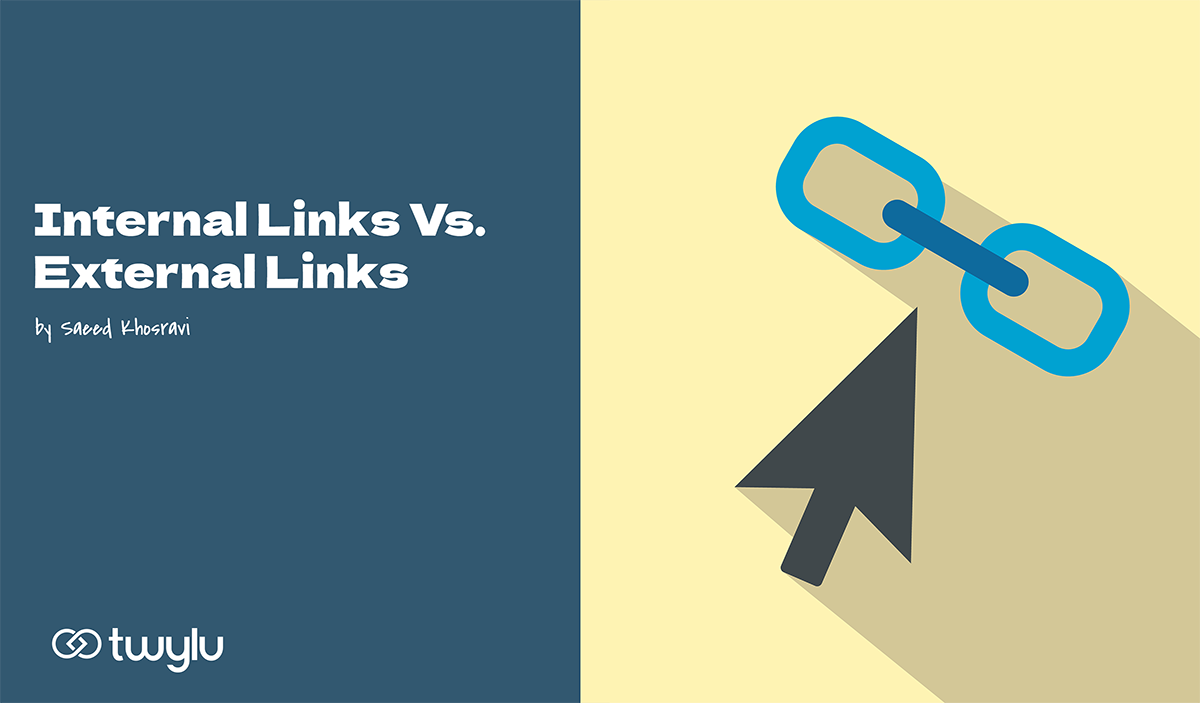Internal links are the links that entirely reside within the same site. Meaning that the site owner has full control over them in terms of which pages link to each other and what text link to be used.
External links on the other hands are inbound links that come from other sites. The site owner has less control over them and they are harder to obtain.
Both internal and external links pass link equity or link juice to the destination page. However, external links bring new link equity for the website and internal links distribute this link equality among different pages of the same site.
Google uses external links to determine authority and relevance of a site and internal links to identify the relevance and the most important pages within the same site (internal authority.)
The relevance is obtained from the anchor text, the co-occurring text (the immediate text surrounding the linked text) and the content within which the link is placed or in other words the topic of the page.
Internal links are important as they can pass the link juice to the pages that you want to rank higher on Google. Meaning that if there is some specific pages on the site that have a good external links profile, you can use them to pass link equity to other pages of the site that you wish to rank higher on search engines. These pages are often called pillar pages, focus pages or evergreen pages.
Google scores external and internal links differently, meaning that they have different weigh and calculations when it evaluates rankings.
Internal links are great to establish relationship between the content of the same site and creating interconnected topical clusters.
Both for the internal links and external links it is important to use descriptive anchor text and avoid over-optimization of the anchor text.
Internal links are excellent resource to redistribute link equity to help improve rankings of underperforming pages. Internal links are also great to create interconnected content clusters.
For both internal and external links you need to regularly audit them to resolve any issues.
External links are seen as endorsements by search engines like Google and often their quality have a higher weight than their quantity.
Here is a comparison table that compare different aspects of internal links with those of external links.
| Aspect | Internal Links | External Links |
|---|---|---|
| Definition | Links that connect pages within the same website. | Links that point from one website to another. |
| Control | Full control by the site owner. | Limited control by the site owner; they are harder to obtain. |
| Purpose | Distribute link equity (link juice) within the site and help rank specific pages higher. Redistributes link juice to underperforming pages, improving overall ranking potential. | Bring new link equity to the site and act as endorsements of the site’s content. Enhances site credibility and trustworthiness, especially if links come from authoritative sources. |
| Relevance in SEO | Helps search engines identify the most important pages (internal authority). | Determines site authority and relevance as perceived by search engines. |
| Weight in Google’s Scoring | Evaluated differently, with a focus on internal navigation and topical relevance. | Higher weight often given to the quality of links rather than quantity. |
| Role in Content Structure | Creates interconnected topical clusters and helps establish relationships between content. | Acts as a credibility signal for the site’s authority and relevance in a broader web context. |
| Anchor Text Importance | Should use descriptive anchor text; avoid over-optimization. | Similarly requires descriptive and relevant anchor text for better indexing and relevance signals. |
| Implementation | Easy to implement and update as they are within the control of the site owner. | Harder to implement as they rely on external websites linking to the site. |
| Audit Frequency | Regular audits needed to resolve broken links and optimize link structure. | Regular audits needed to evaluate the quality and relevance of external backlinks. |
So in general both internal and external links play their own critical role in SEO and should be used as part of a comprehensive SEO strategy.

